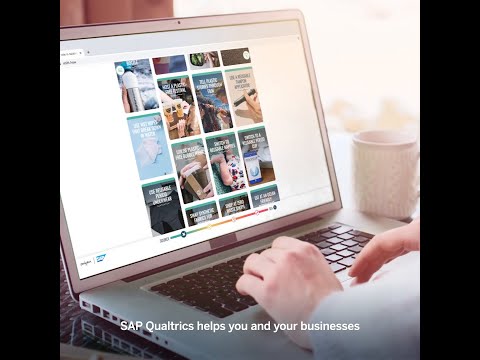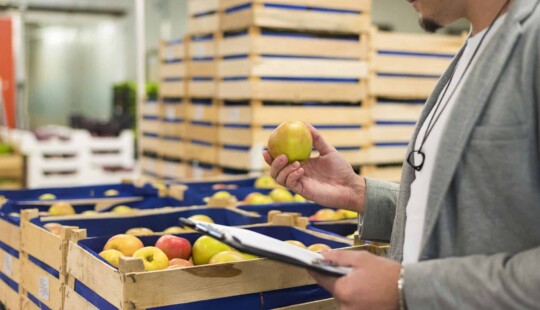For a time during the current coronavirus epidemic, people were not able to participate in immersive experiences, such as a sailing to experience the problem of ocean plastic firsthand. The pandemic has instilled a fear of close contact, which will likely shape human interaction for some time to come.
The challenge now is to create virtual experiences that provoke the same emotional reactions that in-person immersive practices typically elicit. There is no better time than World Ocean Day to get started.

It Starts with a SHiFT
Curators of immersive experiences — like Dave Ford of SoulBuffalo, a company that brings industry leaders to threatened ecosystems, or ocean activist Emily Penn, founder of eXXpedition, a not-for-profit organization that runs all-female sailing research expeditions to investigate causes and solutions to ocean plastic pollution — are now forced to recalibrate and create entirely new models for engagement.
“eXXpedition’s ‘Round the World’ voyages have been paused due to the COVID-19 pandemic,” Penn explains. “But by using technology, we have an unprecedented opportunity to mobilize people, on land or water, who are looking to make a positive impact on society.”
It Works Like This
Anyone anywhere in the world can access the SHiFT Platform, which Penn developed in close collaboration with SAP. Powered by Experience Management (XM) solutions from SAP, the user-friendly, custom-built digital tool is designed to help individuals, advocates, and experts find their role and best-fit solutions to help solve ocean plastic pollution.
Users start by deciding how they want to create a shift. They can learn about marine plastic pollution, make a swap, participate in events and campaigns, inspire others, innovate, or lead their own project. For the business sector, for example, it could be through contributing to a new technology to improve the management of downstream waste.
Next, the user decides where they want to create a shift: at home, with kids, in the community, at work, in industry, or in government. And lastly, they decide the manner of shift they want to create: from sea to source catch (shoreline clean-up), conversion (recycling), looping (circular economy), or avoidance (plastic alternatives).
The platform includes hundreds of solutions, from changes people can easily make at home, like using Cora Ball in their laundry or making DIY cleaning products and composting in their backyard, to shifts they can create in society, like lobbying for more drinking water refill stations in their city or helping introduce plastic bag bans.
It Takes Just a Few Minutes
The platform shares a tailored and targeted selection of solutions so people can pick the one that is right for them. From start to finish, users can generate solutions in a short time.
Browsing the platform, you might decide to explore plant-based swimwear. You’ll come across Slo Active, a brand that makes ocean wear out of plant-based neoprene while also planting a tree for each piece made to offset carbon emissions. You’ll learn about the benefits of using alternative materials and the amount of carbon emissions reduced by this brand, but you’ll also learn that the brand has a limited selection and that products are more expensive than mainstream swimwear. You decide if you want to make a purchase or explore further.
Members of the SHiFT community will come across many like-minded changemakers who are helping to reduce ocean plastic little by little with their projects, businesses, and initiatives.
One of them is Carry Somers, member of the eXXpedition journey from the Galapagos to Easter Island and founder of Fashion Revolution, a global movement of people in the fashion industry that aims to conserve and restore the environment and values people over profit. Somers and her team are active around the world, helping others learn about the people who made their clothes, how to buy, sell, and recycle ethically produced garments, and how to participate in the great clothes swap whether you live in Hungary or Hong Kong.
It Can Have a Huge Impact
Tackling a massive problem like ocean plastic is extremely daunting, so Penn created the SHiFT Method, which helps people see the problem firsthand and explore different solutions before finding their own role to help solve it. It’s about taking action, no matter how small, and inspiring others to follow.
Penn and her team use the SHiFT Method during eXXpedition ocean voyages to empower, workplaces, industry, and government back on land.
“What was missing was the ability to scale,” says Penn.“But thanks to the new platform and the partnership with SAP, we now have a chance to shift the way people feel, think, and act at scale.”
The beauty of the platform is participants and motivate them to create shifts in their own lives, communities that it connects people to outcomes, taking them on a journey from concerned thinker to practical doer. XM solutions from SAP were chosen because they help to build an accurate digital profile of a person, filtering a user’s personal lifestyle, circumstances, and the area they wish to become involved in, and then help them select the appropriate action to take.
Now that the technology is up and running, people who want to make a shift have an enterprise-grade, secure platform for submitting solutions to SHiFT’s directory, allowing Penn and her team to efficiently grow the database of solutions for reducing ocean plastic. At the same time, it will enable SAP to connect its myriad of business initiatives to clean the ocean to a planet of changemakers.
Follow me on Twitter: @magyarj



